Your Kickstarter Project: A Practical Guide
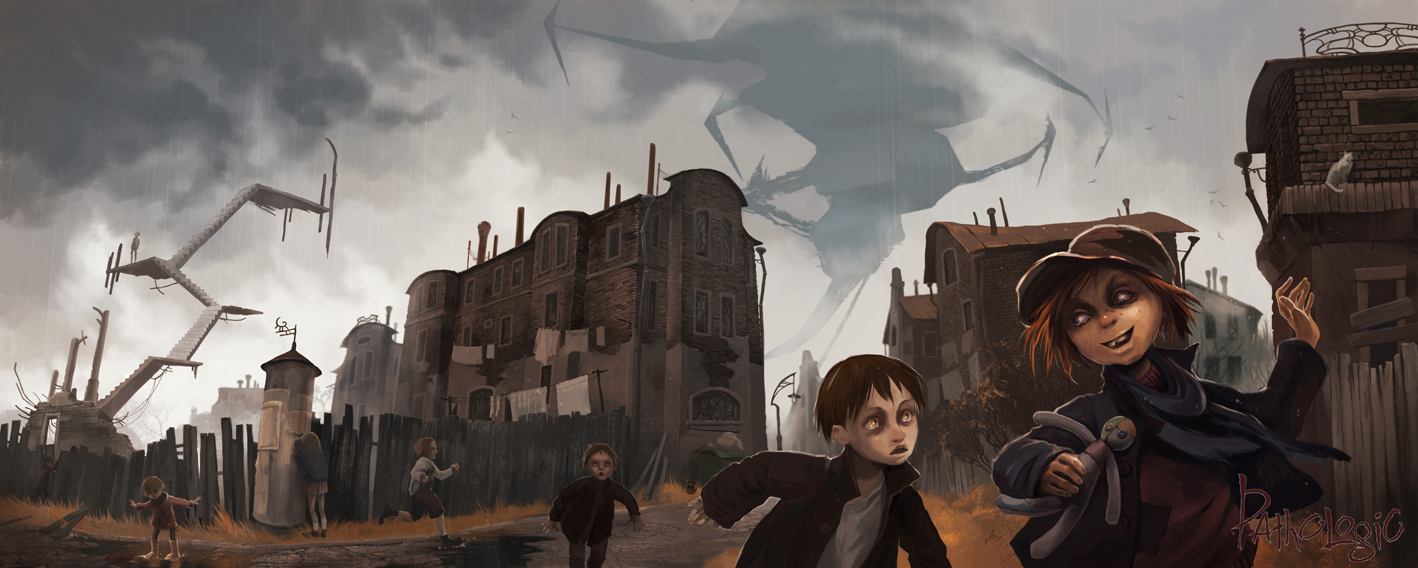
We are a Russian studio that has been developing computer games for more than twelve years. We have created “Pestilence. Utopia "(Pathologic)," Turgor "(Tension)," Turgor. Voice of color ”(The Void),“ Eureka! ”(Cargo! The Quest for Gravity) and“ Knock-knock-knock ”(Knock-Knock).
A few years ago - on the advice of a friend of ours ahead of time - we decided to try out the Kickstarter crowdfunding platform as a source of financing for a small game project.
Despite doubts, the first campaign ended successfully in mid-September 2012. We collected forty-one thousand dollars with the declared thirty. With the money received, the game Knock-knock was developed and delivered to investors.
After the first test, we realized that crowdfunding is not only financing, but also a good advertising platform where you can hone your own PR skills, evaluate the attractiveness of the game for the target audience and get additional promotion immediately after the release of the game.
Therefore, we decided to conduct another campaign. We are going to make a graphically, technologically and gameplay more perfect remake of our first game “Mor. Utopia ”(Pathologic).
Not so long ago, fees reached the declared amount of two hundred and fifty thousand dollars. This is one of the largest results in the post-Soviet space, and we would like to share our observations on the course of the two campaigns, which may be useful to other teams who decided to go to Kickstarter or another crowdfunding venue.
We want to draw your attention to the fact that everything written below applies only to the projects of our studio. Of course, there are completely different scenarios for the development of campaigns, and only you can determine which one is relevant for your project.
Campaign start timing
Since we are not a very well-known studio, especially in the Western world, it was necessary to carefully choose a time period: on the one hand, it was not completely dead, but on the other hand it was not blocked by major game releases and events.
We chose the beginning of September, because summer is the holiday season, and at the end of September - beginning of October, the promotion of major gaming releases starts, striving to approach Catholic Christmas at the peak of public relations.
The day of the week is Thursday, the best time for press releases (on Monday-Tuesday, journalists are just starting to “swing” and rake in clogged inboxes, and on Friday, for many, the week is already over).
The importance of the initial phase of the campaign
We suggest looking at the graphs of the two campaigns taken from the site www.kicktraq.com (a good free resource for tracking statistics).

In the case of Tuk-Tuk-Tuk, the first small column is related to the launch of fees at the border of two days (kicktraq). One can imagine that it is added to the second.

The graphs show that there is only one major peak of interest at the beginning of the campaign. The peak drops sharply, and throughout all the camps you should not hope for the appearance of a second equal in size to it.
We believe that the main reason for the lack of bright peaks is that we do not yet have enough weight for the foreign press. We received hearty support from Rock Paper Shotgun, PC Gamer, and industry professionals such as Brian Fargo and Chris Avellone at the very beginning of the campaign, but there were no support for other major portals at the time of writing. The situation can be corrected either by shocking tricks - which we would not want - or by gradually building up fame in the Western world, which we hope for.
By analogy with “Knock-knock-knock”, you can expect a noticeable rise at the end, due to: a set of the required amount, cross-promotion and messages that Kickstarter sends to users who monitor the project (by clicking the Remind Me button).
The initial data on the collection of “Mora” are well approximated by a power-law function. If the trend continued, then without additional PR, only on the inertia of the start, we would collect 66% of the declared amount, i.e. 165 thousand dollars.
Therefore, concentrate as much as possible on the beginning of the campaign. If you are not prepared enough for the start, you have lost the war. In our case, the total amount collected was 66% dependent on the start.
Of course, such advice can only be given ex post. In fact, none of us fully believed in such a start, we were amazed at the size of the fees: we did not expect to collect half of the declared amount in two days (although it was necessary).
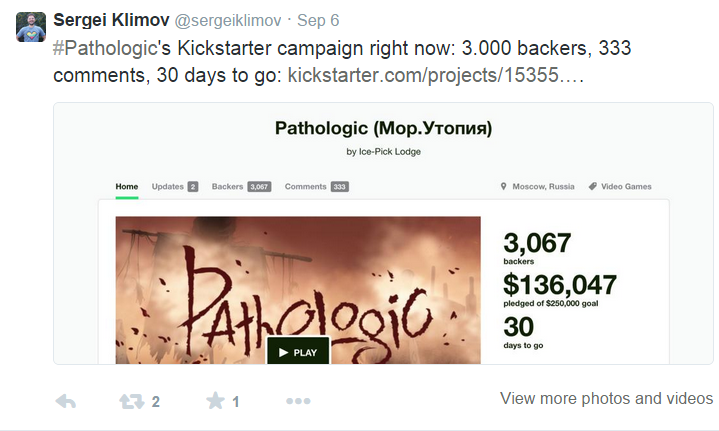
And the fantasy has already naively multiplied the first fees by the number of days left ...
Preparation for launch
Press
The press is a cannon that needs to be loaded long and hard.
Further we will talk about the foreign press, since we have fairly warm relations with the Russian one.
Some of the contacts we have preserved from previous projects, some had to be obtained later with blood: we searched for all the articles that were ever written about us, and tried to find out the contact details of the authors (some even had to write to Twitter or communicate in even more sophisticated ways) . As a result, a list of 60+ live addresses was formed, with which you could communicate directly.
As a result, we launched three “waves” of newsletters on the collected press list:
- Announcement of intention to launch kickstarter. Got coverage from our old Rock Paper Shotgun friends and - unexpectedly - from PC Gamer.

- Announcement of the teaser site and video (about them below). When a video appeared in conjunction with the press release, the interest of the press in us increased noticeably.

- Kickstarter launch announcement. We were pretty nervous before starting the campaign. The press was definitely interested in the first two mailings, but it did not look stunning. However, after the announcement of the kickstarter launch, journalists and portals, silently receiving our letters, were allowed dozens of articles and news notes about the project!
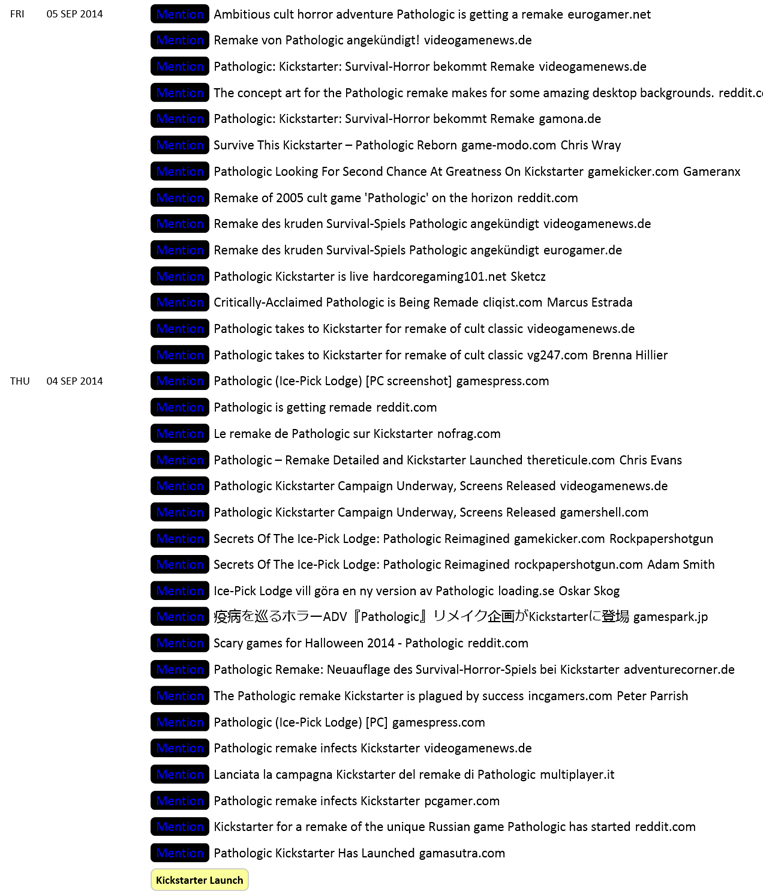
It is impossible to say with certainty that the first two waves were needed, but it seems to us that despite the absence of answers, we prepared the press for Day X, ensuring a more coordinated start.
Preparing an Existing Audience
The key point in preparing the kickstarter was the point on mobilizing our community of about ten thousand people (judging by the number of people registered in our VKontakte groups and on Facebook).
Of course, most of them would come to Kickstarter on their own, but the process would stretch for the duration of the entire campaign. But we needed a breakthrough at the moment of the highest attention - in the first two days.
Therefore, the site feverishfeeling.com was created, originally planned as a simple teaser site with a countdown to the start of the campaign and the ability to sign up for a notification about its launch.
But in our studio they are not looking for easy ways. As a result, the teaser site mutated in ARG ( “playing in an alternative reality”), during which participants every few days received letters in which they talked about a certain disease that was rapidly taking the lives of people in our world, and about an organization trying to hide the fact of the existence of an epidemic.
The result exceeded expectations: we just wanted to make a present to the existing audience in the form of a small mystery that developed over 27 days, and as a result attracted a large number of people who have never heard of the game “Pestilence. Utopia, ”but they were intrigued by the plot of the ARG itself.
According to the results of feverish feeling, we attracted: 3,000 Russian-speaking subscribers, 1,500 English-speaking subscribers. They brought us at least 5% of all fees on Kickstarter (there is an opinion that the percentage is 2-3 times higher, since the site did not take into account all the transitions).
In addition to mobilizing the audience through ARG and social networks, on the first day of the campaign, we released an update to the Tuk-Tuk-Tuk project, which informed the contributors of this game about the start of a new kickstarter.
Roller
The video is the first thing they see on Kickstarter. Our video was born in agony: it was filmed for six months, and the concept changed twice. As a result, we settled on the fact that he should retell the essence of the game in simple and understandable words, but at the same time be “in the style of Ice-Pick Lodge” - a non-trivial and, in fact, separate work.
Many thanks to Scott MacLesley, who filmed, directed and mounted this miracle. Also endless thanks to all our community who participated in the creation of the video. So, in December, more than a hundred people at our call appeared in the Central Telegraph building on Tverskaya Street, lay on the floor in a hall, wrapped in white sheets, and built an impressive and believable picture of an emergency hospital in an hour. For the scene with the operation, we arranged a trip to an abandoned hospital in the city of Pokrov, lulling the guard’s vigilance with the legend of the Mosfilm secret project. Themselves did the whole props. But the result justified the costs.
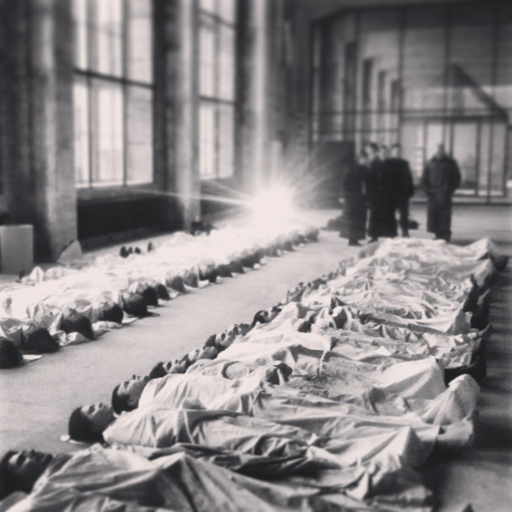
Pledges (installments)
The most important contribution is an entry-level contribution. By choosing it, the contributor receives a digital copy of the game. Its price should be lower than the cost of the game after the release, otherwise there is no reason to buy it right now.
We divided the initial fee into two parts: a limited number of three thousand copies of twenty dollars and an unlimited number of twenty-five. We assumed that the restriction would create a small stir at the start, thereby concentrating resources at the very beginning of the campaign. Expectations were met, but the opposite effect happened: when the limited installment ended, people began to buy the game reluctantly. Apparently, the effect of being late is affected: the person came to the “store", and the most desirable was already grabbed.

If we had a chance to return to the beginning of the campaign, we would increase the number of limited contributions to five thousand. But beware of changing limits right in the fees. It is very serious to add new contributions and change old limits, carefully considering the consequences. Contributor reaction may be unexpected:
- Investors can begin to massively switch to a new installment if it turns out to be unbalanced attractive (kickstarter allows you to change the size of the investment until the end of the campaign). It’s bad if they begin to switch to it from more expensive levels.
- Investors can rightly be offended. For example, we had the five most expensive contributions of three thousand dollars, which were snapped up in the early days of the campaign. For a long time we did not dare to increase their number, because we were not sure how those who had already joined the “closed club” would react to this. But they decided on the changes only by talking to each of the five investors personally. They were pleasantly surprised to learn that the success of the kickstarter and the game was more important for them than the privilege of the awards. And still, one of them blamed us for the “decline in exclusivity”.
- Another unexpected moment we encountered was additional in-game content. We had several items and events attached only to certain rewards. Beware of this! People want to get a full-fledged game for their money - even for the most inexpensive contribution - and not a stump (and we understand them). We had to separately explain that neither the subject nor the event are key and play a purely cosmetic role.
Physical contributions are the most expensive, but also the most controversial and difficult to execute. Be sure to calculate: the cost of development, small-scale or single-unit production, packaging, delivery. And do not forget that you need to earn money on them, because you have to release a game, and not organize an enterprise for sewing T-shirts.
It is worth mentioning separately “the pig in a poke” - a contribution for $ 47, which gave the largest fees for the game “Knock-knock-knock”. During the campaign, we did not tell what exactly the investor gets by purchasing this award - we promised a secret. The mystery worked, but perhaps the success of this award is only the result of our image as a non-standard studio. We decided to repeat this experiment with a contribution of $ 100 in the new campaign, and at the moment it brings 17% of the total fees.
Campaign work
From the foregoing, we can conclude that up to 66% of the amount of fees the campaign could "roll" on their own - as a result of the initial surge. But there were still 34% that needed to be gained by additional activity. Significant peaks in the graphs were not expected, so it should have been labor 34%.
Updates
The hardest work is releasing updates. We do this at intervals of about once every two days, but maintaining such a pace is difficult.
Each update is automatically sent to contributors. Although this does not increase the size of the audience, but constant activity does not doubt the success of the project and does not give investors the opportunity to "jump off".
Our updates are organized as game texts written by team members. We believe this increases confidence in the project: the kind of working team can be watched as fire and water - endlessly.
At some point, we regretted not adding the team’s work to the main video. Take a look at the movie from Moon Hunters:
www.kickstarter.com/projects/kitfoxgames/moon-hunters-a-myth-weaving-rpg
Everyone is busy with their own business, it is clear that there is a team and that it works smoothly.
Show the team work in your main kickstarter video. The way they draw, model, program. The appearance of a well-coordinated team increases investor confidence in the successful completion of the project.
Explain incomprehensible rewards in updates. After the update, which describes the board game in more detail, several contributors bought the game or raised their fees. We expect the same effect from updates that describe other physical rewards that people want to study in detail before buying.
Audience size increase
The main problem in the middle of the campaign is to increase the audience. The first peak of popularity has passed, the exhibitor has done its job and threateningly rushed to zero. Now only constant work will allow her not to fall into the final zero or even into a negative value (this was observed one day at Tuk-tuk-tuk).
Do not consider kickstarter as a source of audience - this is not a magical place where your own community finances projects. Yes, Kickstarter brings a certain number of purchases, especially if you received the staff pick icon, but the volume of this audience is not very large.
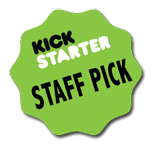
Both of our projects received staff pick. The proportion of users who came through Kickstarter was:
- Knock Knock Knock ~ 25%
- Pestilence. Utopia (Pathologic) ~ 17%
The percentage is significant, but not enough to become the basis of the campaign. In addition, the percentage will be even lower if the editors do not choose your project. Therefore, from the very beginning, get ready for the fact that you should bring the audience yourself - through the community and the press.
Let's take Molecat Twist as an example:
www.kickstarter.com/projects/molecats/molecat-twist-indirect-puzzle-game
The game was released on Kickstarter a little earlier than “ Knock Knock Knock ”. The project has an interesting idea, it is well designed, even has a demo, but it has collected quite a bit. Most likely, the point is the absence of a given audience, because the quality of the presentation is decent. We stumbled upon the Molecat Twist just before the start of Knock Knock Knock, which made us pretty worried and doubtful of success.
PR
Our friends from the gaming industry have complained about our bad PR since the time of Tuk-tuk-tuk, although we did not have such a feeling. The fact is that “Tuk-tuk-tuk” is a little game, so with PR we felt like bears in a china shop. We think that getting a good advertising cover is difficult for any small project: it’s embarrassing to shout about such games in the squares — they are too small, large online publications don’t want to write about them.

“Mor” is easier - this is a huge game with seventy hours of gameplay, a couple of resonators, a tricky multi-layered plot. This time we tried to correct mistakes, follow the advice of friends and even attract several small advertising agencies abroad. But it seems to us that the amounts spent on them barely fought off (if fought off). Perhaps this is not the fault of the agencies, the reason here is complex:
- We only took care of the agencies at the beginning of the campaign, so we had little choice, but no coordinated plan.
- We make niche products, so PR managers who are used to working with more standard teams and projects find it difficult to rebuild, especially at low budgets. Therefore, we are better at advertising ourselves. However, this does not mean that there is no such PR man in the world that would suit us - just need to look for the right ones.
- For PR, you need info feeds. No info lines - no PR. We spent the main efforts on the start of the campaign, leaving almost no content on its course. And for PR, you need new screenshots, videos, demos, the development of which takes months.
Use any news feed to expand your audience. For example, the game collected half of the total amount on the first day - an excellent news feed; collected the full amount: we write an article and make a new press release.
Ideally, carefully prepare all the informational issues before the start of the campaign.
PS In the next room several team members are discussing potential news feeds. Judging by the outbursts of laughter, the references to Putin, the greens, and feminism, the topics for serious information lines are exhausted.
Cross promotion
The fashionable English word “crosspromotion” means mutual advancement: another project is writing about you on kickstarter, and you reciprocate it.
For the first time we tried cross-promotion on Tuk-Tuk-Tuk, and, to our surprise, it brought about one-eighth of all fees (less on the Sea).
First, we waged ethical debates about the appropriateness of using cross-promotion for the company's reputation. But in the end, they agreed that if you take the choice of projects seriously and don’t sell your soul to the devil, then nothing bad will happen.
It is important to choose projects that you really like (all team members can do this) and not be afraid to refuse projects whose quality or style does not suit you, even if they have already written about you unilaterally (this happened). You should be responsible to your investors and offer them only the good.
Stretch goals
Toward the end of the project - if you see that you are gaining the desired amount - it is worth declaring "super-goals" or "what will we do if we gain more."
We prepared for “super goals” in advance, although we did not quite understand the mechanism of their action. Goals are announced in the next update, letters are sent to investors who have already invested in the project, and we only expected that some of them would raise their investment level a little. This does not expand the audience, so a noticeable increase was not expected.
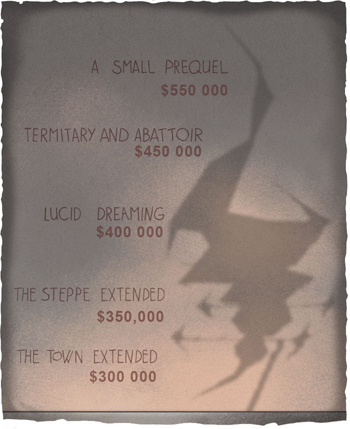
In reality, everything turned out to be better: after the announcement of the goals, the flow of users increased. We noticed that the goals launched discussions in social networks, people wanted to achieve them. Some online publications have used “super-goals” as an information guide.
However, after a few days the effect faded, but we hope for its revival at the very end of the campaign.
Kickstarter Completion
After the end of fees, the kickstarter blocks the main page of the project, but you can still write updates. Therefore, do not forget to add to the pitch a link where investors can give you money later. We have written for this a separate crowdfunding mini-system “Threads”.
During and after the “Tuk-tuk-tuk” training camp, it was possible to raise about 15 thousand dollars — about a third of all fees — with its help, but at the moment it is closed for mobilization reasons (the kickstarter campaign at the time of writing is not yet complete).

